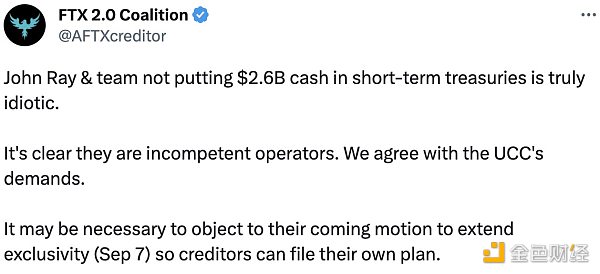Ethereum 2.0: The future of Ethereum
Foreword: Ethereum 2.0 aims to solve the scalability problem to realize the vision of its world computer. Ethereum 2.0 is currently implementing the first three phases: PoS, sharding, and eWASM. At present, it takes at least a year and a half. The success of Ethereum 2.0 directly determines its future status in the entire blockchain field, because other expansion options, such as Polkadot, Cosmos and Harmony, are essentially expanding and applying the ecology. Whoever can take the lead, whoever gets the lead.
In November 2013, a Russian-Canadian young university student at the University of Waterloo and co-founder of Bitcoin magazine published a white paper proposing to develop a blockchain platform that supports common scripting languages and application development.
His name is Vitalik Buterin, and his thoughts soon ignited. Butrin and the other seven founders created Ethereum, a smart contract platform for building decentralized applications. They launched crowdfunding, funded development, and raised 3,700 bitcoins in 12 hours, which was worth about $2.3 million. A year later, the project began operations in 2015.
Ethereum's early promise was to create a world computer—a decentralized world computer—that would execute anyone's code in exchange for fees, such as token sales or decentralized loans. In an early speech, Buterin used Ethereum as Google Play: Ethereum will allow developers to upload applications to the blockchain for use anywhere in the world.
- The Digital Currency in the Eyes of Economists – The Exchange: The Glory of the King
- Nakamoto's mistakes have made Bitcoin more central. Do you understand these questions?
- Market analysis: the sharp drop is just a dishwashing, the positive is not honored

(From January 2018 to January 2019, active users of Ethereum dApps fell by nearly 60%, Source: stat of dApps)
After four years of fast-forwarding, in many ways, we are still waiting for this promise to be realized. Although the application from Augur's forecasting market to collectible games like Cryptokitties has been launched in Ethereum, most applications have not been used consistently, and have not been close to being a consumer application developed like Facebook and Google. These apps can reach billions of users.
The current status of dApps shows that the current top-level Ethereum dApp has only 3,000 active users in the last 24 hours. Even though dApp is attracting mainstream adoption, it is unclear whether the network has the ability to support it. At the peak of the Cryptokitties boom, Ethereum's transaction costs rose to 0.02 eth, or $20. As the core project stagnated, dApps failed to attract users, and the entire cryptocurrency market gradually cooled. The price of the ether has dropped from around 51% of the market value of Bitcoin in January 2018 to around 17% today. (Blue Fox note: about 30% currently)
To realize its potential and extend decentralized applications to millions or even hundreds of millions of users, Ethereum must address key issues related to scalability and performance. To this end, Ethereum developers have launched an ambitious ETH 2.0 roadmap that includes PoS, shards and more. Here's what investors need to know — and the corresponding time frame — that these developments may affect the fundamentals of ETH.
Ethereum 2.0 Roadmap

(Ethereum 2.0 Roadmap, Source: Hsiao-Wei Wang)
Many of Ethereum's problems are related to inherent flaws in speed and scalability. Addressing these issues while maintaining the decentralization of the agreement is a core priority of ETH 2.0.
When people say that Ethereum is a "decentralized smart contract platform," they mean that the code for smart contracts is stored on every full node on the network, and the code must be executed on all nodes. Ethereum's PoW consensus model means that this can take anywhere from 3 to 18 minutes, depending on the degree of network congestion. As a result, the cost of deploying code on Ethereum is much more expensive and much slower than using a centralized service like Amazon Web Services (AWS).
Ethereum 2.0 is designed to scale, and it has two main goals:
1. Introduce the PoS consensus mechanism, which will eliminate the need for expensive PoW mining.
2. Introduce sharding, which will increase the speed and throughput of ETH transactions. Ethereum 2.0 will build a new, stand-alone platform and gradually replace existing systems in the future, rather than trying to build these upgrades directly onto the main network.
Ethereum's wiki draws seven different phases for ETH 2.0, which can take several years to implement. Most are still in the research phase and there are no clear technical specifications. Before the developer can actually build on Ethereum 2.0, the first three phases need to be completed:
• Stage 0 – Beacon Chain: The Beacon Chain is an asset certification chain that will run in parallel with the EW Square PoW chain. At the beginning, the beacon chain does not support smart contracts or accounts for the sake of brevity.
Phase 1 – Basic Sharding: Sharding is designed to help spread transactions by dividing the network into multiple shards, allowing the network to process multiple transactions simultaneously.
Phase 2 – eWASM: eWASM is essentially a rebuilt Ethereum Virtual Machine (EVM) that supports PoS and sharding. It will introduce smart contracts, accounts, etc. to ETH 2.0.
The phased rollout of Ethereum 2.0 is designed to test every upgrade of the protocol in a secure environment without compromising security.
As Ethereum researcher Ben Edgington writes:
"Building on such a new platform, the beacon chain, allows us to introduce huge innovations indefinitely without being constrained by today's main network. The most important thing is that there is no need to open the chest on the currently running network. surgery."
In the rest of this article, we will introduce the first three phases of the roadmap, namely PoS and Ethereum.
Beacon Chain: Bring PoS to Ethereum
The beacon chain is intended to serve as the nervous system of Ethereum 2.0 and introduces the PoS chain, which will initially run in parallel with the EW Square PoW chain. The beacon chain is expected to be launched in 2019.
Currently, Ethereum runs on a PoW blockchain where miners compete to solve a difficult cryptographic problem. The answer to this question is easy to verify, but hard to find, which means proving that consensus requires a significant investment in hardware and power. With PoS, you can reach a consensus through a set of nodes called certifiers. Each of these verifiers "pledges" a certain number of ETHs to participate in the consensus process. The verifier proposes a new block to add to the chain and validate the new transaction through the voting process. The verifier is rewarded for good behavior and is also punished for bad behavior (for example, voting for invalid transactions).
The primary responsibility of the beacon chain is to maintain a set of PoS consensus verifiers, propose and validate new blocks, and add them to the chain. Each verifier must pledge 32 ETHs. The beacon chain also randomly selects a committee of 120 verifiers to vote which block is written into the chain. Phase 0 of the Beacon chain will be extremely basic, neither supporting smart contracts nor supporting accounts, but it will lay the groundwork for the next step of development, such as sharding and upgrading Ethereum virtual machines.
PoS is not a new concept: As early as the Bitcointalk Forum 2011, it was discussed in the early days of Bitcoin. One of the general criticisms of PoS is that it can lead to a small group of wealthy verifiers with oligopoly control over the network. The ETH 2.0 roadmap aims to solve this problem by trying economic incentives and game theory, but it is not yet known how this will be achieved.
Fragmentation: The scalability of Ethereum 2.0

(Slice-based verification example, source: Hsiao-Wei Wang)
Currently on the Ethereum network, each full node verifies all transactions. If you upload a smart contract to Ethereum, it means that it must be executed at every node on the network, limiting transaction speed and throughput while increasing the size of the node to more than 2TB.
In Ethereum 2.0, the shards proposed a solution to this problem to help the Ether expansion. Sharding is the division of large databases into smaller, faster segments. Each shard has its own trading chain. The Ethereum account will be assigned to one of the shards where it can be traded with other accounts.
Ultimately, the idea of Ethereum 2.0 is to promote cross-sliced communication – but this will not happen until the second or later stage. On Ethereum 2.0, fragmentation is used as the shared data layer of the network. The launch of the initial shard of Ethereum 2.0 will have to wait until at least 2020.
Vitalik Buterin's explanation of the shard is as follows:
“Imagine that Ethereum is divided into thousands of islands. Each island can do its own thing. Each island has its own function, and everyone belonging to the island, the account, can interact, they are free Indulge in all of its functions. If they want to get in touch with other islands, they must use some kind of agreement."
The Ethereum segmentation of Phase 1.0 will be introduced on the PoS beacon chain. The slice will be verified by a set of certifiers randomly assigned by the beacon chain. The shards of the shards only need to verify the transactions on the shards to which the beacon chain is assigned. Phase 1.0 will introduce 100 pieces of work that work in parallel, initially, at this stage, they will not process accounts, assets, or smart contracts.
Fragmentation brings scalability benefits to the network by splitting large numbers of network transactions across shards, but it also brings a new set of security issues. In PoW, an attacker needs to accumulate a 51% hash rate in order to successfully launch an attack. For example, if the network is split into 100 shards, the network hash rate (or pledge deposits in PoS) required to successfully attack the shards is reduced. Another criticism is that sharding may result in a higher degree of centralization because each different shard is run by a relatively small set of certifiers.
Although Ethereum developers have proposed solutions to these problems—primarily by ensuring that verifiers are randomly selected—they still need to be tested, which is why the initial implementation of the fragmentation is limited.
eWASM: Ethernet virtual machine v2
The current Ethereum virtual machine processes transactions in order. Each node on the Ethereum network executes the transaction and stores it on the blockchain. To allow PoS and parallel transaction processing through sharding, the Ethereum team plans to build a new virtual machine called eWASM. It is still in the research phase and will not be built until at least 2020 – and may even take longer.
This is the key to introducing smart contract functionality into Ethereum 2.0 and enabling it to perform similar to Ethereum 1.0, just faster and better.
According to the specifications of eWASM:
"To truly make Ethereum a world computer, we need a very high-performance virtual machine. The current virtual machine architecture is one of the biggest obstacles to raw performance. The goal of WebAssembly is to take advantage of the common hardware available on various platforms. Features, performed at near-native speeds. This will open the door to a variety of uses that require performance/throughput."
The introduction of eWASM will allow Ethereum 2.0 to support smart contracts, accounts, status, and more. However, eWASM is still in the research phase of development, and it may change a lot before it is pushed to production.
Ethereum 2.0 is a marathon, not a sprint
Ethereum 1.0 is a group of people trying to build a world computer in a chaotic manner; Ethereum 2.0 will be the actual world computer. ——Vitalik Buterin
For ETH investors, the most important thing to understand about the Ethereum 2.0 roadmap is that it proposes a thorough reform of the agreement – which takes a lot of time and effort to achieve.
Kyokan interviewed several teams related to Ethereum 2.0. According to one of his reports, the first three phases of delivery will take at least a year and a half. Contrary to popular media claims, investors should be aware that developers who want to build on Ethereum 2.0 need to wait for delivery at these stages. In addition, many of the later stages of the roadmap are still in the development phase of the study, which means that new research may invalidate some parts of the roadmap or cause significant delays.
If Ethereum 2.0 can solve the problems associated with PoS and sharding, then it may be fully capable of maintaining its leading position as the largest smart contract computing platform in cryptocurrency. But this certainly won't happen overnight.
The author of this article is SPOX, translated by the "Blue Fox Notes" community "Cipher"
We will continue to update Blocking; if you have any questions or suggestions, please contact us!
Was this article helpful?
93 out of 132 found this helpful
Related articles
- Bitcoin soared 13,000 US dollars to the highest level in 17 months Coinbase website crash caused a plunge
- Blockchain + insurance = ? Empty technology, blockchain is a dead word!
- Babbitt column | Six key points of Facebook's CaLibra/Libra
- As bitcoin skyrockets, large traders are becoming bitcoin futures "big shorts"
- What is the secret behind Bitcoin breaking through the $13,000 mark?
- The FATF's strongest regulatory new regulations have come, and the exchange's "resistance" will be held at the end of the month.
- The star project ALGO is a retail harvester: 60% in 5 days, and 48 times in private equity.






